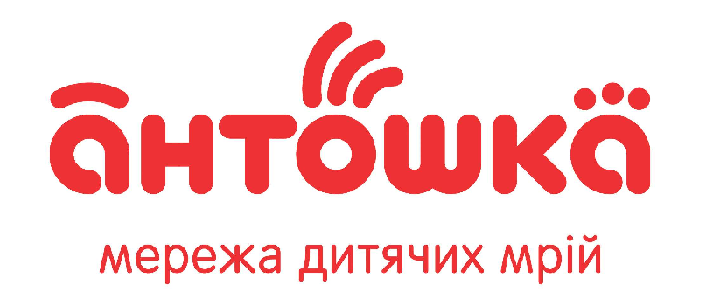
Reports. Assessment. Metrics. How to visualize e-learning data.
Is learning becoming a strategic tool for business development?
Does it help companies stay competitive?
By itself – definitely not)
But effective learning – definitely yes.
But when do we realize that the training is effective and bears fruit?
Of course, after analysis. The cause-and-effect relationship is as follows: for training to be effective, it needs to be measured correctly. For this purpose, we use the following key learning effectiveness metrics.
In this article, we’ll look at the key learning performance metrics, why they’re important to analyze, and how they can be visualized using LMS analytics tools.
Why it is important to analyze learning outcomes
Analyzing learning outcomes is a necessary process for building an effective training strategy, company development, and changes in the business environment. It helps to:
- Determine whether the training goals have been achieved, whether the learning was successful, and how well it meets the company’s needs.
- Understand which learning methods are effective and which are not, to ensure optimal staff development and achievement of business goals.
- Identify aspects of the learning process that can be improved and make changes to the learning process to increase its effectiveness.
What metrics to pay attention to and how to work with them
There are many different metrics that can be used to evaluate the effectiveness of training. The choice of metrics for evaluation depends on the specific learning objectives. However, there are some general metrics that will be useful for analyzing corporate learning programs:
1. Undergoing training
The metric measures the number of employees who participated in the training and completed all its stages. This helps determine the level of employee interest in training and their readiness to improve their skills and knowledge.
What does this metric indicate: A high pass rate may indicate the effectiveness of the training program, a good level of employee engagement and their ability to absorb new material. At the same time, a low pass rate indicates the need to revise or modernize learning materials and learning methods. It also indicates the need for support or additional motivation for employees to learn.
How to visualize with LMS?
LMS Collaborator automatically collects training statistics and visualizes them in graphs. This allows you to easily track employee progress, analyze their level of interest, efficiency, and identify trends.

Course completion statistics in LMS Collaborator
2. Completion of training
Measures the percentage of participants who successfully complete the training. This is an important metric that allows you to assess the effectiveness of the training program, evaluate the quality of the content, its relevance and comprehensibility for employees.
What does this metric indicate: A high completion rate indicates that the program is relevant to the current level of knowledge of employees and is effectively contributing to the achievement of the learning objectives. On the other hand, a low rate may indicate problems with the availability of materials, the complexity of the course, or ineffective teaching methods..
How to visualize with LMS?
LMS Collaborator collects statistics on each element of a training course or program. This helps to track the progress of the participants and their success in completing the training.

Training course report in LMS Collaborator
3. Duration of training
Measures the time employees spend on training. This metric is an important performance indicator because it allows you to assess how quickly employees acquire the necessary knowledge and skills. A detailed analysis of the metric will help you understand how effective the chosen training format is and what aspects need to be optimized. In addition, it can be useful when planning new courses and updating existing ones, allowing you to tailor the material to the needs and capabilities of participants.
What does this metric indicate: For example, if the average training duration is too long, it may be a sign that the training program is complex or not optimally designed, making it difficult for participants to absorb the material. On the other hand, a very short training duration may indicate that the material is not deep enough and does not meet the needs of employees.
How to visualize with LMS?
LMS Collaborator allows you to view the time that employees spend on tests and training resources, including videos. The data can be downloaded to a report and used for further analysis of the effectiveness and complexity of training.

Protocol of test responses in LMS Collaborator
4. Assessment of training results
Analyzing the results of training is a key step in performance evaluation. It allows you to understand how well employees have learned the material and what needs to be improved to enhance the quality of training.
This metric includes an assessment of participants’ knowledge, understanding, and skills based on completed practical tasks, tests, checklists, or other forms of assessment.
What does this metric indicate: High scores indicate that the participants have successfully mastered the training material and have a good understanding of it. Low scores indicate the need for additional training and areas of knowledge that need to be improved..
How to visualize with LMS?
In LMS Collaborator, you can create various types of tasks to assess the mastery of theoretical material: comprehensive and regular tests, checklists, assessments, and practical tasks. For each of them, the system collects statistics and generates reports that help to analyze the results in detail and identify areas of knowledge that need improvement.

Testing report in LMS Collaborator
5. Engagement and activity during training
Measures the level of employee participation and engagement in the learning process. This metric reflects the frequency and intensity of participants’ interaction with the learning platform and course materials:
– Number of visits to the training platform over a certain period of time.
– Length of time spent on the platform during each visit.
– Participation in discussions and interaction with content: activity in forums, chat rooms, groups, etc..
What does this metric indicate: A high level of engagement may indicate a positive experience of the participants during the training and an active interest in the training content. Low rates can be a sign of disinterest in learning, loss of motivation due to lack of understanding of the material, insufficient interaction and support from tutors, etc.
How to visualize with LMS?
LMS Collaborator has many tools that help employees communicate during training: commenting on training tasks, reactions and evaluations of Knowledge Base resources, discussing topics on the forum, surveys to collect feedback, etc. In addition, the system collects data on user activity on the learning platform and their learning history.

User session log on the learning portal
Conclusion
Performance analysis and data visualization are important tools for companies looking to improve the performance of their employees. A thorough study of key metrics allows you to optimize training processes and predict future results:
- Effectiveness of training programs.
How well employees learn the necessary knowledge and whether the training program meets its goals. You can also assess the effectiveness of the program in terms of time and resources. - Areas for improvement.
Identify weaknesses in the program and identify areas that need to be refined or improved. This may include: the need to update materials, improve teaching methods, or introduce additional resources. - Need for additional training.
If the results of the training indicate that employees do not have a sufficient level of knowledge or skills, this may indicate the need for additional training. - Employees’ potential.
Identify the strengths of each employee that can be developed. This is important for creating individual development plans and career trajectories.



































